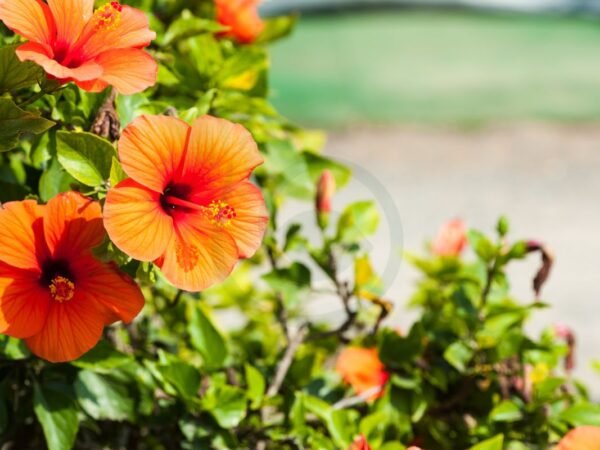Ever wondered how to collect hibiscus seeds successfully? In this guide, we will unravel the secrets to planting and storing these vibrant seeds, ensuring a flourishing garden in the seasons to come.
Key Takeaways
-
Understanding the lifecycle of hibiscus seeds is crucial for successful collection.
-
Follow precise steps to prepare for and collect hibiscus seeds effectively.
-
Utilize proven methods for efficient seed collection to ensure viability.
-
Store hibiscus seeds properly in a cool, dry place to maintain their quality.
-
Care for collected hibiscus seeds by monitoring moisture levels and avoiding mold.
-
Utilize the collected seeds promptly to plant or store them for future propagation.
Understanding Hibiscus Seeds
Seed Identification
Hibiscus seeds vary in shape and color, ranging from dark brown to black. Mature hibiscus seeds have a distinct hardness, ensuring viability for planting. Look closely for any unique markings or patterns on the seeds, aiding in identification.
Best Collection Time
Optimal seed collection time is early morning when temperatures are cooler. Choose a dry day to prevent moisture from damaging the seeds during collection. Avoid gathering seeds in rainy or humid conditions to maintain seed quality.
Seed Pod Maturation
Monitor the color of the seed pod, waiting for it to turn yellowish as a sign of maturity. Ensure the pod is firm and dry before harvesting to guarantee seed viability. Collect seeds only after confirming that the pod has undergone complete maturation.
Preparing for Collection
Necessary Tools
To start collecting hibiscus seeds, gather essential tools. Prepare tweezers or small scissors for precise seed extraction. Have paper bags or envelopes ready for storing the collected seeds. Keep a notebook handy for labeling and tracking seed collection details.
Plant Selection
When you begin collecting hibiscus seeds, choose plants wisely. Select hibiscus plants with vibrant and healthy flowers for seed collection. Opt for genetically different hibiscus cultivars to ensure successful cross-pollination. Make sure the plants are well-established and free from diseases.
Safety Measures
Prior to starting the seed collection process, prioritize safety measures. Wear gloves to protect your hands during seed extraction. Avoid any contact with eyes and mouth while handling hibiscus seeds due to their potential irritants. Work in a well-ventilated area to prevent inhaling pollen particles that may cause discomfort.
Collecting Seeds Step-by-Step
Identifying Ready Pods
When collecting hibiscus seeds, look for pods that have started to dry and change color. Check for pods that have slightly cracked open. Avoid pods that are still green or soft to the touch.
Harvesting Pods
To harvest hibiscus seeds, gently twist the mature pods to detach them from the plant. Use pruning shears to cut stubborn or hard-to-reach pods. Handle harvested pods carefully to avoid damaging the seeds inside.
Extracting Seeds
After harvesting, open the pods carefully to reveal the seeds. Separate the seeds from the pod using gentle techniques. Avoid crushing or damaging the seeds during extraction.
Effective Collection Methods
Manual Picking
Handpick individual seeds from the pod using tweezers. Remove any debris or unwanted materials from the seeds. Transfer the collected garden seeds to a clean, dry container for storage.
Drying Techniques
Spread the extracted seeds in a single layer on a paper towel. Allow the seeds to air dry in a warm, well-ventilated area. Check the seeds regularly for dryness and proper ventilation.
Seed Cleaning
Remove any remaining pod fragments or impurities from the seeds. Use a fine sieve to separate seeds from debris. Ensure the seeds are completely clean before storage.
Storing Seeds Properly
Ideal Conditions
Moderate moisture levels are essential for hibiscus seeds to remain viable for planting later on. Keeping a consistent temperature range is crucial in preserving the quality of the seeds. Ensure storage in a cool, dark place to protect them from any potential damage caused by direct sunlight exposure.
Container Types
When storing hibiscus seeds, opt for breathable containers such as paper envelopes to allow proper air circulation. Alternatively, use airtight containers to shield the seeds from excess moisture that could lead to mold growth. Labeling the containers clearly with both the collection date and hibiscus species helps maintain organization and easy identification.
Labeling Tips
For effective labeling of seed containers, utilize waterproof markers to prevent smudging or fading over time. Include vital information like the species of hibiscus, the date it was collected, and the specific location where it was obtained. To avoid confusion, securely attach labels to containers so they don't get misplaced during storage.
Caring for Collected Seeds
Moisture Control
Maintain the humidity levels in the seed storage area to prevent mold growth and seed damage. Utilize desiccants such as silica gel packets to absorb any excess moisture that may be present. Avoid storing seeds in areas that are prone to dampness or condensation, as this can lead to spoilage.
Temperature Management
Keep a stable temperature range in the seed storage location to ensure the viability of the collected seeds. Prevent extreme temperature fluctuations that could potentially harm the seeds. Store the seeds away from heat sources and direct sunlight exposure, which can impact their quality.
Regular Checks
Periodically examine the stored seeds for any indications of mold or pests that could compromise their integrity. Seal the containers tightly to prevent any contamination from external sources. Rotate the seed containers regularly to encourage even air circulation, aiding in maintaining seed freshness.
Seed Propagation Basics
Germination Process
To start the germination process of hibiscus seeds, prepare a suitable medium that is light and airy. Monitor the seedlings closely for any signs of growth to ensure successful germination. It's crucial to provide adequate light and moisture for healthy development.
Soil Preparation
When it comes to soil preparation, opt for well-draining soil with a balanced nutrient composition. Enhance the soil by adding organic matter, which aids in fostering robust seedling growth. Always check and adjust the soil pH to create an ideal environment for hibiscus plants.
Planting Depth
Plant hibiscus seeds at the recommended depth to optimize their germination potential. Cover the seeds lightly with soil to facilitate proper root establishment. Avoid planting the seeds too deep as this can impede their emergence and growth.
Utilizing Collected Seeds
Growing Hardy Hibiscus
Hardy hibiscus varieties should be carefully chosen based on climate zone compatibility. Ensure they receive sufficient water and sunlight to thrive. Shield the plants from harsh weather elements to promote healthy growth.
Luna Series Introduction
Explore the distinctive traits of the Luna series hibiscus, including their specific growing needs. Delve into the wide array of color options offered within the Luna series for a vibrant garden display.
Disco Belle Series Overview
Understand the distinguishing characteristics of the Disco Belle series hibiscus. Compare their growth patterns with other hibiscus types. Appreciate the variety in flower shapes and colors that the Disco Belle series presents.
Planting Location Tips
Sunlight Requirements
Hibiscus plants need 6-8 hours of sunlight daily for optimal growth. Avoid direct midday sunlight to prevent scorching. Young hibiscus seedlings benefit from filtered sunlight to prevent sunburn.
Soil Quality
Before planting hibiscus seeds, test soil pH and nutrients. Enhance fertility by adding compost or organic matter. Opt for well-draining soil to prevent waterlogging and root rot.
Watering Needs
For healthy root development, water hibiscus plants deeply but infrequently. Let the soil slightly dry between watering sessions. Adjust watering frequency based on weather conditions and plant growth stage.
Final Remarks
You now possess a comprehensive guide on collecting and caring for hibiscus seeds. Understanding the seed propagation process, effective collection methods, and proper storage techniques equips you to nurture these seeds successfully. Utilize the insights on planting location tips and seed utilization to maximize the growth potential of your hibiscus plants.
Take action today by applying these strategies to collect, store, and propagate hibiscus seeds effectively. Share this knowledge with fellow gardening enthusiasts to help them enhance their gardening skills too.
Frequently Asked Questions
How do I know when hibiscus seeds are ready for collection?
Hibiscus seeds are ready for collection when the seed pods turn brown and start to crack open naturally. This indicates that the seeds are mature and ready to be harvested.
Can I store hibiscus seeds for a long time?
Yes, hibiscus seeds can be stored for several years if kept in a cool, dry place. Make sure to store them in an airtight container to prevent moisture and pests from damaging the seeds.
What is the best method for collecting hibiscus seeds?
The best method for collecting hibiscus seeds is to wait until the seed pods have turned brown and started to split open on their own. Then gently remove the seeds from the pods and allow them to air dry before storing.
How should I care for collected hibiscus seeds before planting?
Before planting, make sure to keep collected hibiscus seeds in a cool, dry place to maintain their viability. Avoid exposing them to moisture or extreme temperatures, as this can reduce germination rates.
When is the best time of year to plant hibiscus seeds?
The best time to plant hibiscus seeds is in the spring when temperatures are consistently warm. This will provide the ideal conditions for germination and early growth of the hibiscus plants.
Image Source: Paid image from CANVA




